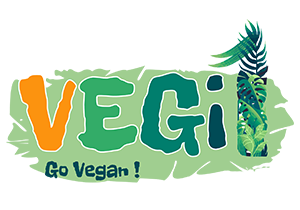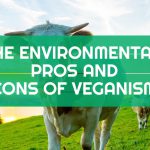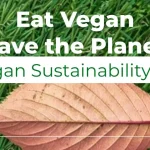Veganism and Climate Change Facts
How Your Food Choices Impact the Planet
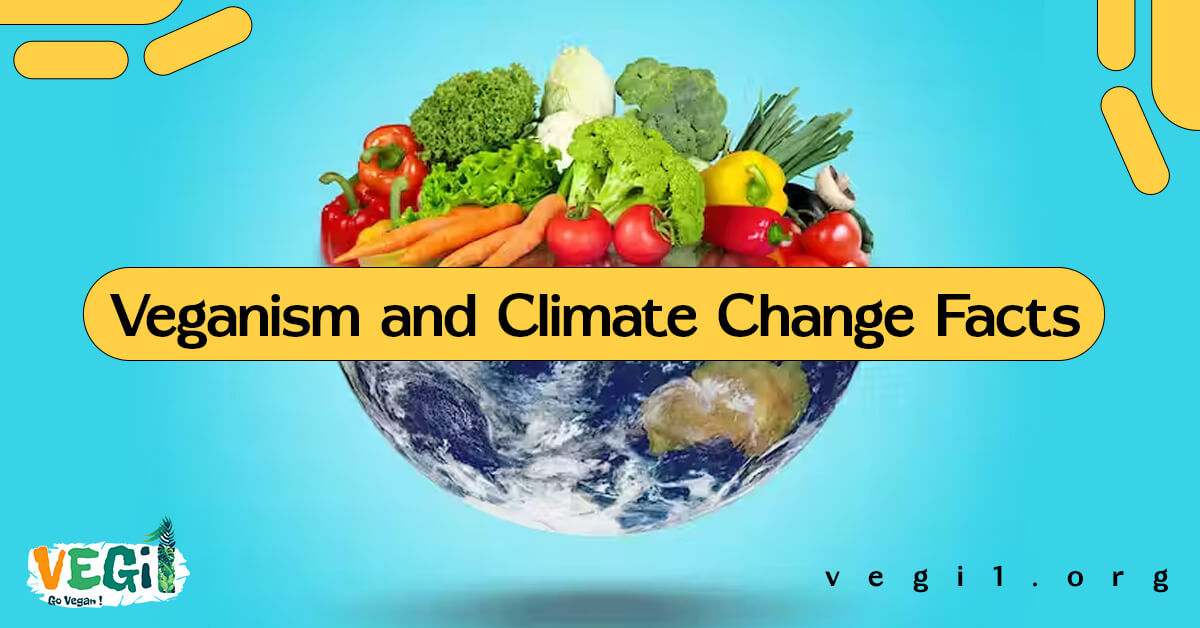
Throughout the years, there have been many theories and opinions about the corruption of the planet Earth in the future.
From climate change to running out of energy sources, there were plenty of statements and they were mostly predicting horrendous outcomes based on looking at the poor management of everything in the world.
By taking a look at the current situation of the world you will see the inferior usage of everything by people and companies.
Everything that you are about to read in this article is valid and it’s written based on the experience of being vegan for years and also backed up with authentic research by famous food and health websites.
Keep in mind that there is a solution to all of this and we will talk about the solution later in the article.
But before we talk about how veganism changes everything, we are going to fully explain climate change and how animal agriculture is ruining it.
In this article you will read:
Climate Change
What is climate change?
Numerous famous websites have defined climate change and explained it in their own words, but what all of them mean by climate change is the corruption of the climate.
UN explains the meaning of climate change:
“Climate change refers to long-term shifts in temperatures and weather patterns. Such shifts can be natural due to changes in the sun’s activity or large volcanic eruptions. But since the 1800s, human activities have been the main driver of climate change, primarily due to the burning of fossil fuels like coal, oil and gas.”
In simple words, climate change is the change of the condition of normal weather, which means becoming warmer or drier or, let’s rephrase it, becoming worse.
How Climate Change Causes Drought
First, I have to explain how climate change causes drought and then explain why drought is horrible and dangerous for the future.
Drought is the deficiency of something over a period of time, but for most of them, it is known as a prolonged dry period in the natural climate cycle.
Drought causes water shortage, and that comes with serious life-risking outcomes.
If we run out of water, that means that not only our water resources are going to be empty, but we will also run out of energy soon.
“An estimated 55 million people globally are affected by droughts every year, and they are the most serious hazard to livestock and crops in nearly every part of the world. Drought threatens people’s livelihoods, increases the risk of disease and death, and fuels mass migration. Water scarcity impacts 40% of the world’s population, and as many as 700 million people are at risk of being displaced as a result of drought by 2030.”
Health Implications of Drought
Drought causes water and food shortages, and because of that, there will be impacts on health, like the increase in risk of disease and death.
These are the worst outcomes that come with drought:
- There will be malnutrition due to the decreased availability of food, with an increased risk of infectious diseases, such as diarrhea, due to lack of water and sanitation.
- There will be mental health issues such as stress and mental health disorders.
- You might suppose that drought is only about not having enough water, but the truth is that it can also affect the weather.
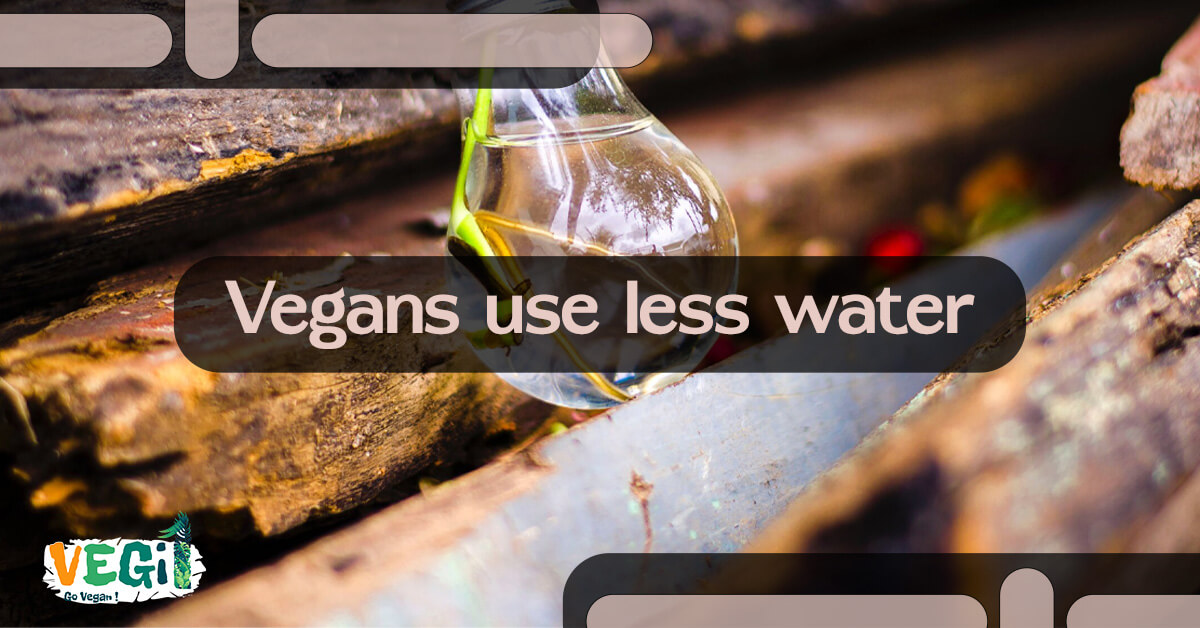
Other Effects of Climate Change
80-90% of natural disasters from the last 10 years are from floods, droughts, and severe storms.
-
Warmer Temperatures
Warmer temperatures change weather patterns and also destroy the normal cycles of nature in different ways.
Rising temperatures that are caused by climate change make dry regions drier and wet regions wetter.
When temperatures go up in dry regions, water evaporates, and when resources of water evaporate, there will be a high risk of drought.
-
Storms
When temperature changes, there will be changes in rainfall, too, and those changes can lead to frequent storms.
Storms are really a big deal based on common sense, and the main reason that makes them stand out and stay on top of the most dangerous disasters list is that a storm can wreck everything in the area by causing a lot of damage.
-
Food unavailability
The Cdc.gov website has explained this issue:
“Drought can limit the growing season and create conditions that encourage insect and disease infestation in certain crops.
Low crop yields can result in rising food prices and shortages, potentially leading to malnutrition.
Drought can also affect the health of livestock raised for food.
During drought, livestock can become malnourished, diseased, and die.”
Due to this issue, there can be problems in finding food, or it can also raise food prices.
Climate change also has a huge negative impact on soil and water sources.
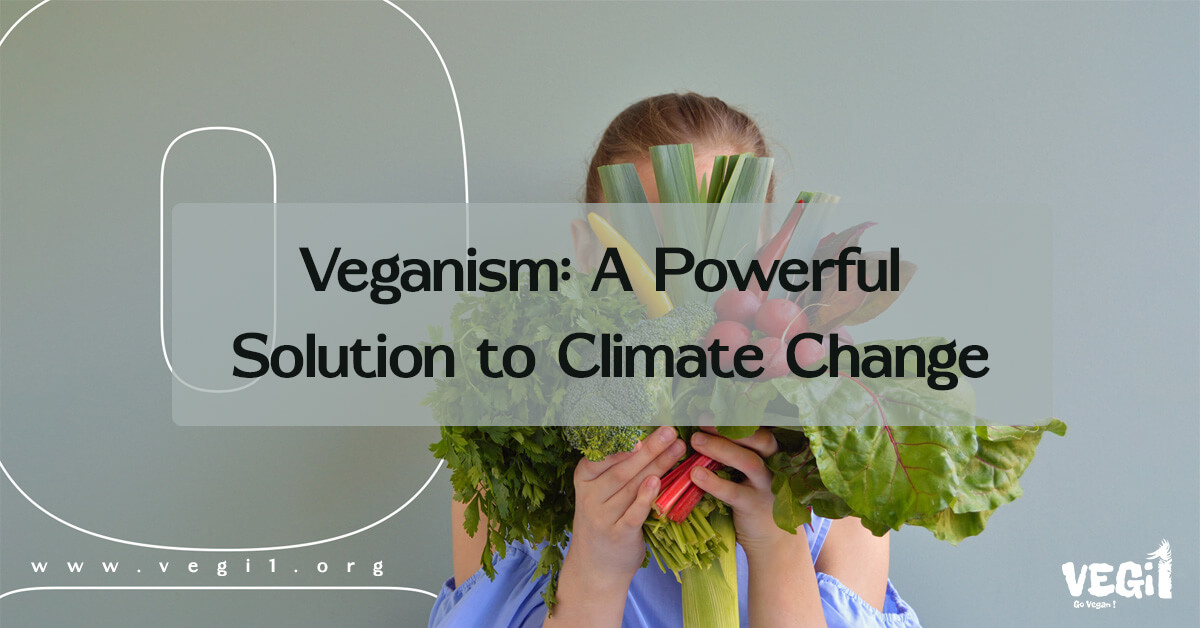
Animal Agriculture Impact on Climate Change
“As the climate changes, crop production strategies must also change and adapt. Amidst the challenges posed by climate change, global population growth further exacerbates the problem of sustainable food production to meet demand.”
So, as you can see, our problem with that is not only because of killing animals!
Animal agriculture causes a lot of bigger problems, and we have talked about this in our previous article.
The most important thing is their usage; their usage of water, land, and crops is so high that not only does it unbalance the cycle, but it also requires acres of land.
Keeping cows in a big farm takes a lot of space. However, that’s not the main issue; the croplands that are exclusively for animal food take way more space.
Animal Agriculture’s Statistics
Let’s bring some numbers from the previous article just to show you how easily food choices can affect the climate and cause environmental problems in both direct and indirect ways.
The meat and dairy industry uses 1/3 of the earth’s fresh water.
The water usage of making one hamburger is around 3000 liters of water, which is equal to 2 months of showering.
According to Newsweek, the amount of water required for the breeding of a 1000-pound cow can make a destroyer float.
Another fact is that U.S.A. water use is 5% domestic and 55% animal agriculture.
More than half of the whole country’s water use is for animal agriculture, and that’s showing us how eating meat impacts water use.
Now, let’s talk about how much space animal agriculture takes.
91% of Amazon’s destruction is caused by animal agriculture.
1 to 2 acres of rainforest are cleared every second.
Since 1960, around 25% of tropical forests have been burned and turned into pastureland.
We are not going to get deep about deforestation only because they cut down trees; we will talk about it to prove our point about how industries are willing to occupy more land, but if you want to know more about deforestation and how it is linked to animal agriculture, you can read our previous article.
Meat production is the number one cause of deforestation globally, with half of the world’s habitable land used for this purpose.
In 2017, it was announced that livestock production uses 70% of agricultural land.
Cutting down trees directly causes climate change because when you cut down trees, you have cut them from the climate change battle, and by that, you have destroyed the cycle of CO2 and oxygen since trees take CO2 and produce oxygen by maintaining the cycle.
Forests are truly essential for carbon capture and sequestration.
In the United States alone, 60% of fresh water is used just for growing crops that are used in animal feeding.
CSIRO reports that it takes around 50,000 liters of water to produce one kilogram of beef, which is equal to more than 12 months of showering.
Lastly, keep in mind that high usage of water can lead to drought.
How Food Choices Affect the Climate
So, based on the previous paragraph, you should understand how big animal agriculture’s usage of resources and land is.
And the root of that comes to only one thing: the food choices.
Take another look at the animal agriculture statistics paragraph to see the numbers related to the meat industry.
Do you think that if we stop eating meat or less meat, those numbers will stay the same? Absolutely not!
It’s all due to people’s demands.
People buy meat and animal products, and because of that, they tend to continue their business and actions.
That’s the outcome of our food choices, and if you want to make a change and stop this, you have to break the cycle by not buying meat or at least trying to consume less meat so that you somehow slow down its process.
Vegans diets are diets that don’t waste water because not only do vegans not cause water waste by not eating meat, but they cut the cycle of plants turning to animal food, which wastes a lot of water certainly because they eat plants.

Water Required for Production of Different Foods
This table shows the volume of water that is needed to produce one kilogram of a certain food.
| Food Name | Liters of Water Needed to Produce 1 Kilo |
| Chicken Meat | 4,325 |
| Beef | 15,415 |
| Cheese | 3,178 |
| Pork | 5,988 |
| Apple | 822 |
| Tomato | 214 |
| Rice | 2,497 |
| Cabbage | 237 |
| Banana | 790 |
As of now, it should be clear to you that vegan foods are way better for the climate.
Carbon Footprint
Carbon footprint is an indicator that showcases the total amount of greenhouse gasses emitted from an activity, product, or company.
Livestock animals account for 14% to 17% of global emissions.
According to the University of Colorado Boulder:
Animal agriculture produces 65% of the world’s nitrous oxide emissions, which has a global warming impact 296 times greater than carbon dioxide.
Raising livestock for human consumption generates nearly 15% of total global greenhouse gas emissions, which is greater than all the transportation emissions combined. It also uses nearly 70% of agricultural land, which leads to being the major contributor to deforestation, biodiversity loss, and water pollution.
How Climate Change Affects Our Health
At first, we must care about climate change and that should be one of our biggest concerns.
Flash back to the effects of climate change part; we saw that climate change comes with crazy effects that we can call threats rather than effects.
Because those conditions aren’t just temporary, especially the warmer temperatures.
Those examples show that climate change also puts us in danger, not only the planet.
The harsh truth about global warming is that it doesn’t stop and every year the planet Earth gets warmer and drier and if we don’t care about climate change, that will boost global warming.
Global Warming
Next up, we have to talk about global warming.
Animal agriculture definitely has a big role in global warming because it leads to ocean acidification and that brings carbon emissions.
When carbon emissions increase, a chemical reaction occurs between carbon dioxide in the atmosphere and ocean water, causing seawater acidification.
The reason that scientists claim this is dangerous is because of the toxic environment that it creates.
James Lovelock, one of the most famous scientists of all time says:
“6 billion people will perish at the end of the century”
He continues:
The scale of the catastrophe that awaits us will soon become obvious. By 2020, droughts and other extreme weather will be commonplace. By 2040, the Sahara will be moving into Europe, and Berlin will be as hot as Baghdad. Atlanta will end up a kudzu jungle. Phoenix will become uninhabitable, as will parts of Beijing, Miami and London. Food shortages will drive millions of people north, raising political tensions. “The Chinese have nowhere to go but up into Siberia,”
By 2100, the earth’s population will be culled from today’s 6.6 billion to as few as 500 million, with most of the survivors living in the far latitudes – Canada, Iceland, Scandinavia, the Arctic Basin.
James Lovelock’s terror masks the same old industrial-era thinking | Grist. https://grist.org/article/dont-panic/
Air Pollution
Referring back to our previous article: The Environmental Pros and Cons of Veganism | The truth that you didn’t know!
Animal agriculture produces 65% of the world’s nitrous oxide emissions, and the global impact of it is 296 times greater than carbon dioxide.
It can be said that around 15% of global greenhouse emissions result from livestock farming.
In Europe, food alone is responsible for 30% of total greenhouse gas emissions.
Cows are number one on the list for causing the majority of greenhouse gas emissions.Talking about cows, many people don’t think about the fact that cows that are raised for beef consume a lot of food and water.
And since the world population goes up over time, the need for food goes up too, so that demands for meat get way higher as time goes and that means that more greenhouse gas emission is on the way.
Air pollution impacts everything!
It impacts humans, animals, crops, and also the food we eat.

Water Pollution
Even if there is a way of not using water for providing poultry, dairy, eggs, and most definitely, meat, their production of still causes water pollution since they come with a gigantic amount of waste that can affect the weather.
Through the years, all the global health organizations and health activists have shown prime examples of why meat industries have a direct impact on the corruption of water.
As said, not only do farm animals take up a huge percentage of the world’s freshwater, the livestock waste is absolutely a part of water contamination.
Besides animal farms’ high usage and waste of water, they cause water pollution by polluting the water in different ways.
CO2 Levels
In the atmosphere, carbon dioxide is a part of the cycle of greenhouse effect and carbon.
There has been a big increase of 50% in CO2 levels since the start of the Industrial Revolution.
The increase is mainly because of human activity.
Wikipedia says:
“Burning fossil fuels causes increased CO2 concentrations, and that’s why climate change happens.
Carbon dioxide is a greenhouse gas that absorbs infrared radiation.
It plays a significant role in influencing the earth’s surface temperature through the greenhouse effect.
Increases in atmospheric concentrations of CO2 and other long-lived greenhouse gases such as methane, nitrous oxide, and ozone increase the absorption and emission of infrared radiation by the atmosphere, causing the observed rise in average global temperature and ocean acidification.
Carbon dioxide exerts a larger overall warming influence than all of the other greenhouse gases combined.”
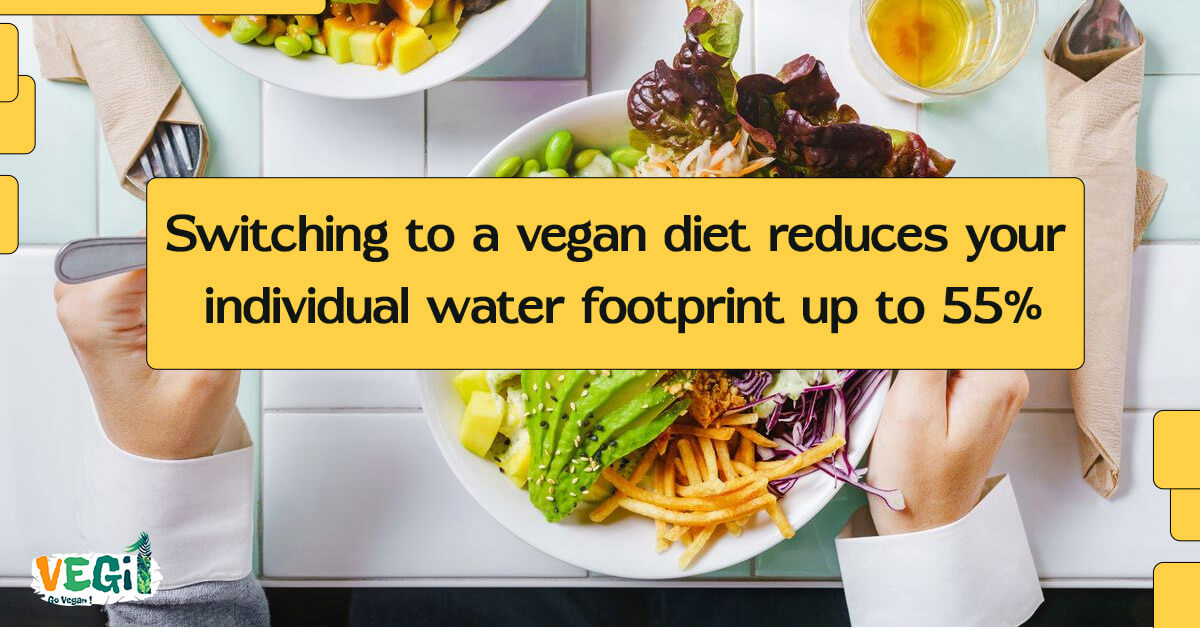
How Veganism Solves All These Problems
So, after all this science talk, you should be able to put all that information into perspective.
Even as a vegan, I agree with the fact that all these environmental problems aren’t because of eating meat, but logically, most of them are.
But the good news is that the change starts from your food plate, and that’s pretty easy.
By changing your diet from a non-vegan to a vegan diet, you will make a profound change by wasting way less water.
Like the previous article, we brought facts and numbers about animal agriculture and then showed the better alternatives, which were vegan.
We talked about vegan burgers and meat burgers as an example.
Plant-based burgers require between 75-90% less water than real beef burgers.
Referring back to how animal agriculture impacts the environment, we are not saying that if animal farms stop, climate change and global warming will end.
But keep in mind that the majority of these problems are because of them.
We also brought evidence to the article just to prove our point.
Going vegan can be the best solution to all these environmental and climate issues.
When you follow a vegan diet, you automatically help the environment.
By doing that, you put a stop to deforestation, overfishing, and the killing of animals, and you will also help in stopping water waste and air pollution.
Moreover, you can send a message to the world by not wearing clothes that are made from animals.
There are a lot of vegan clothing brands out there that you can buy clothes from.
Besides that, you will help lots of businesses too.
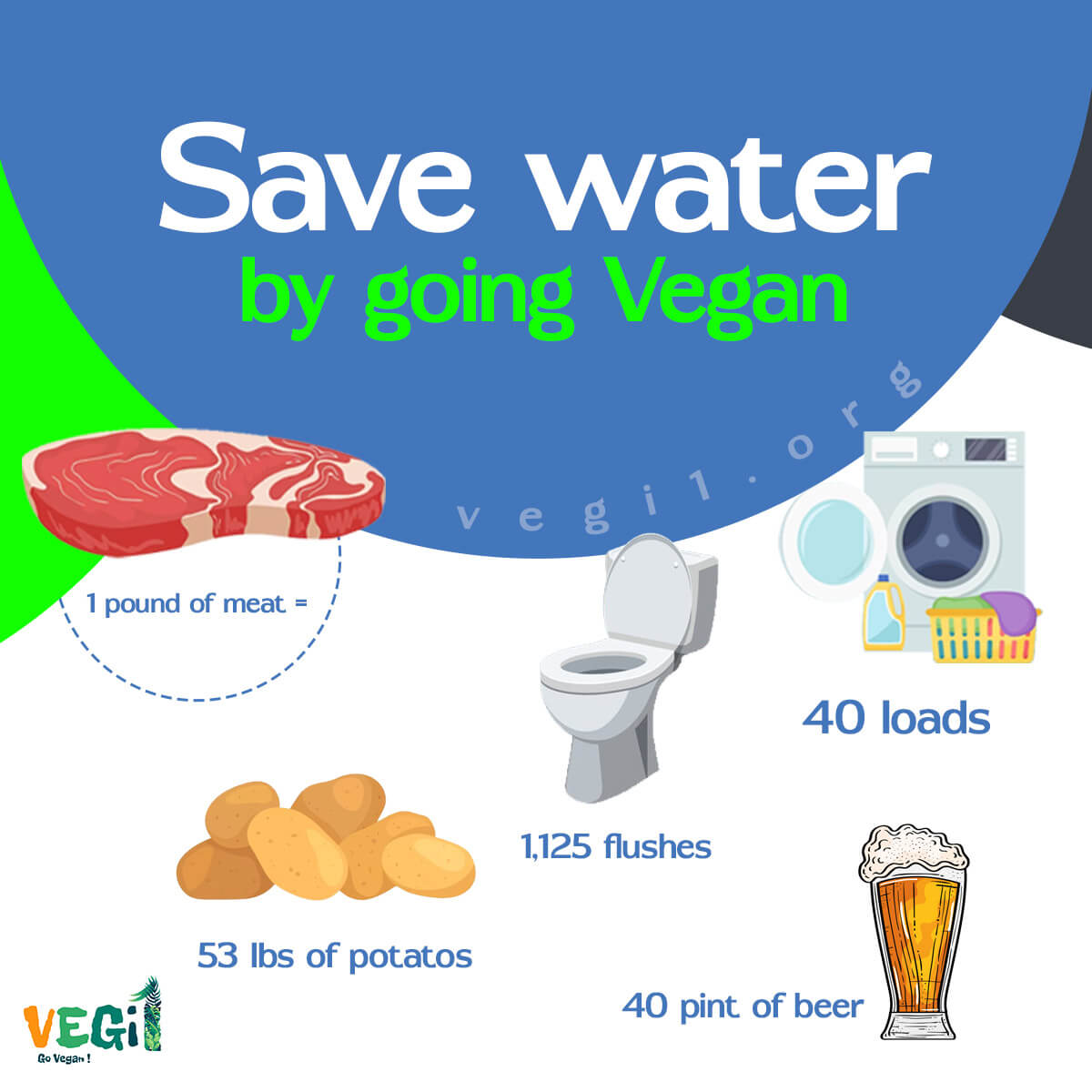
Final Words
So, if you read this article carefully, you would have enough reasons to go vegan and save the world, but that comes to you.
If you care about the current status of the world and also care about climate change, you should consider going vegan even if you don’t care about animals, and it is really as simple as that.
And that’s it!
I hope this article helped you in changing your perspective.
